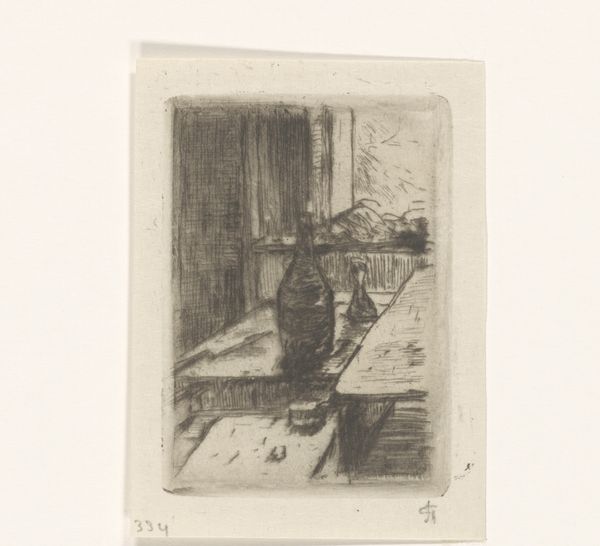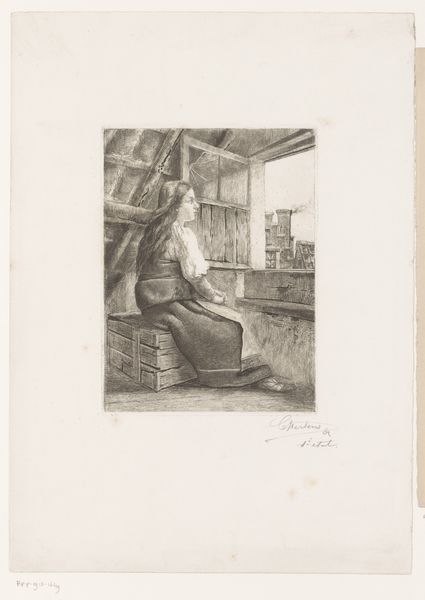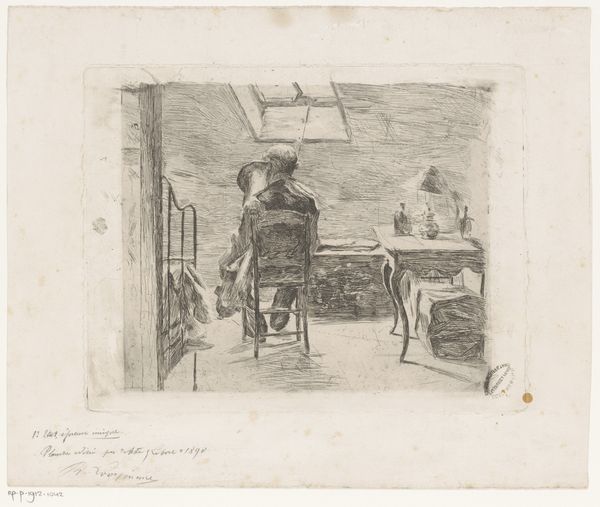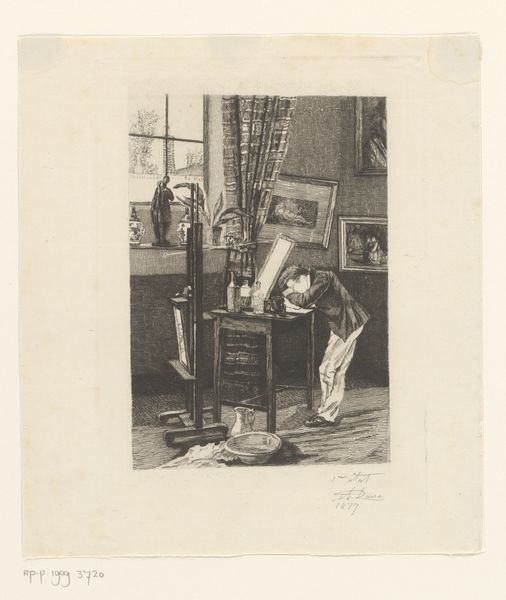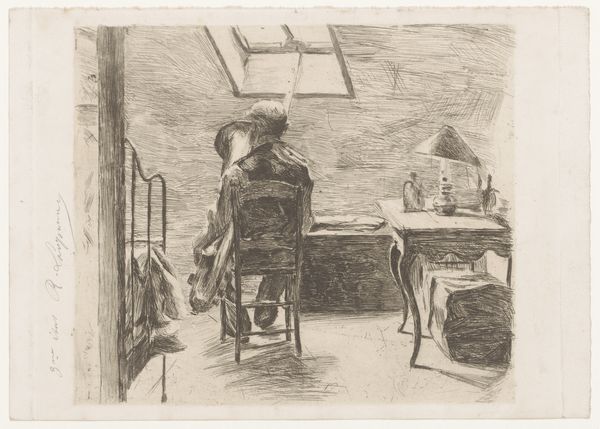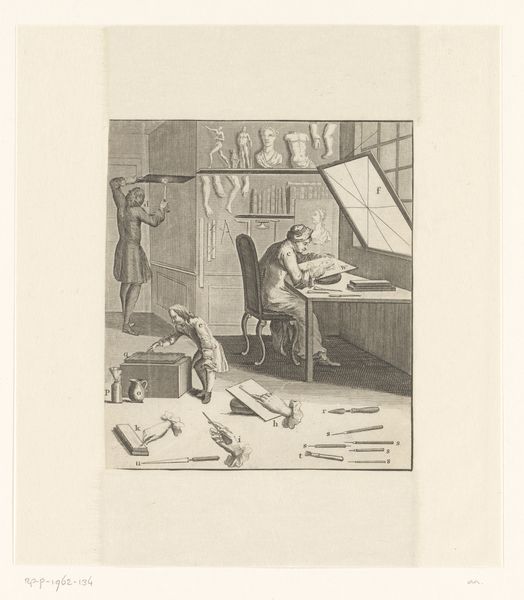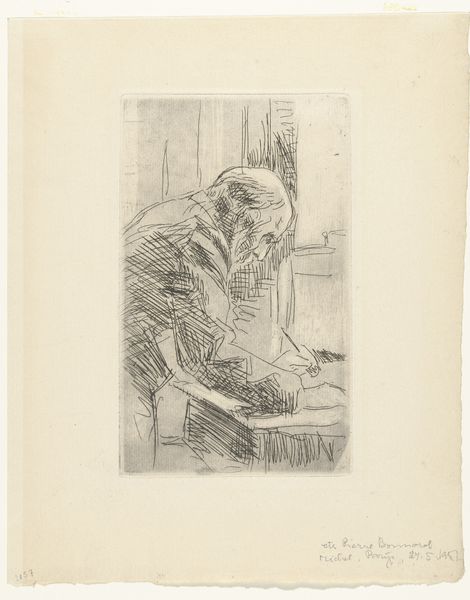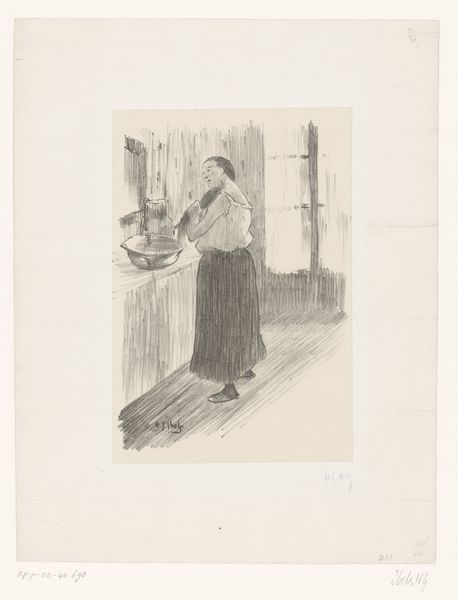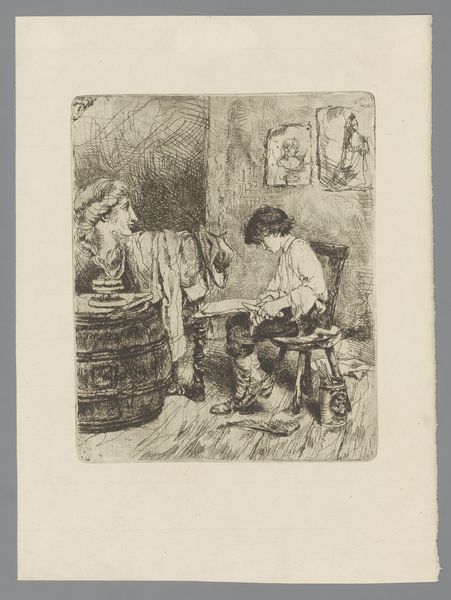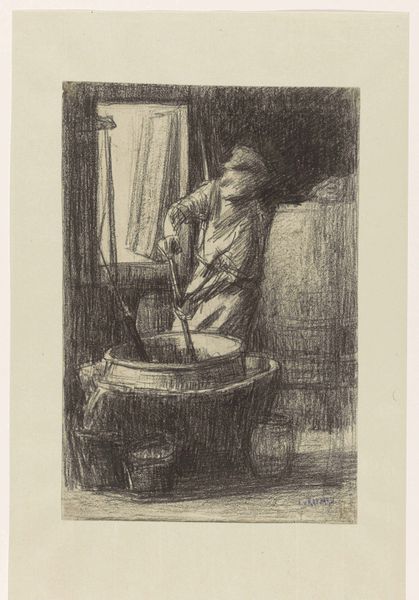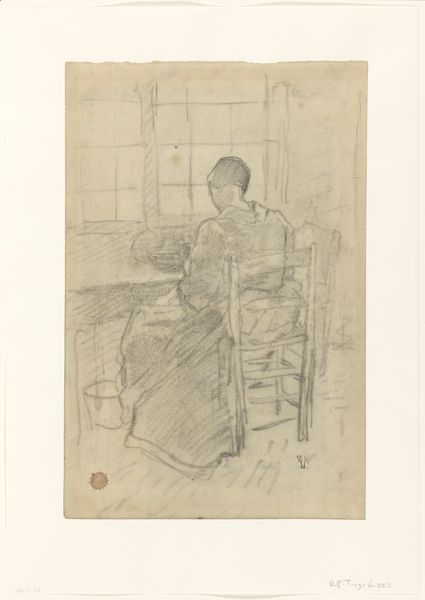
drawing, paper, ink
#
portrait
#
drawing
#
light pencil work
#
pale palette
#
pale colours
#
ink paper printed
#
light coloured
#
old engraving style
#
paper
#
ink
#
line
#
genre-painting
#
realism
Dimensions: height 200 mm, width 130 mm
Copyright: Rijks Museum: Open Domain
Editor: So, here we have Jozef Hoevenaar's "Etser in zijn atelier," or "Etcher in his studio," created sometime between 1850 and 1926. It's a drawing in ink on paper. There's a quietness to the scene, a lone figure at work. What strikes you when you look at it? Curator: Immediately, I see the weight of tradition. The act of etching, represented here, is steeped in alchemical symbolism. Consider the light filtering through the window, illuminating the artist: light representing inspiration, knowledge, perhaps even divine intervention. Editor: Divine intervention? Curator: Indeed. Think of the etcher as a kind of conduit, transforming base metals – or, metaphorically, base ideas – into something precious. The tools on the table become almost sacramental. Even the bottles might allude to an earlier symbolic use in paintings to reflect a deeper truth or something medicinal? What do you suppose that might be? Editor: Perhaps a connection between art and healing? Curator: Precisely. It suggests that the artistic process itself is transformative, not just for the artist but potentially for the viewer as well. And consider the pose, with his back to us, he becomes less of a portrait of an individual and more a representation of any artist striving to refine their inner world through their craft. Editor: It’s interesting how what looks like a simple scene can be read with so much symbolism. I’ll never look at an artist's tools the same way! Curator: And that's the beauty of visual language. Once you understand the grammar, the stories become infinitely richer. I find myself thinking differently about creative acts of all kinds, understanding that their processes carry profound symbolic baggage.
Comments
No comments
Be the first to comment and join the conversation on the ultimate creative platform.
